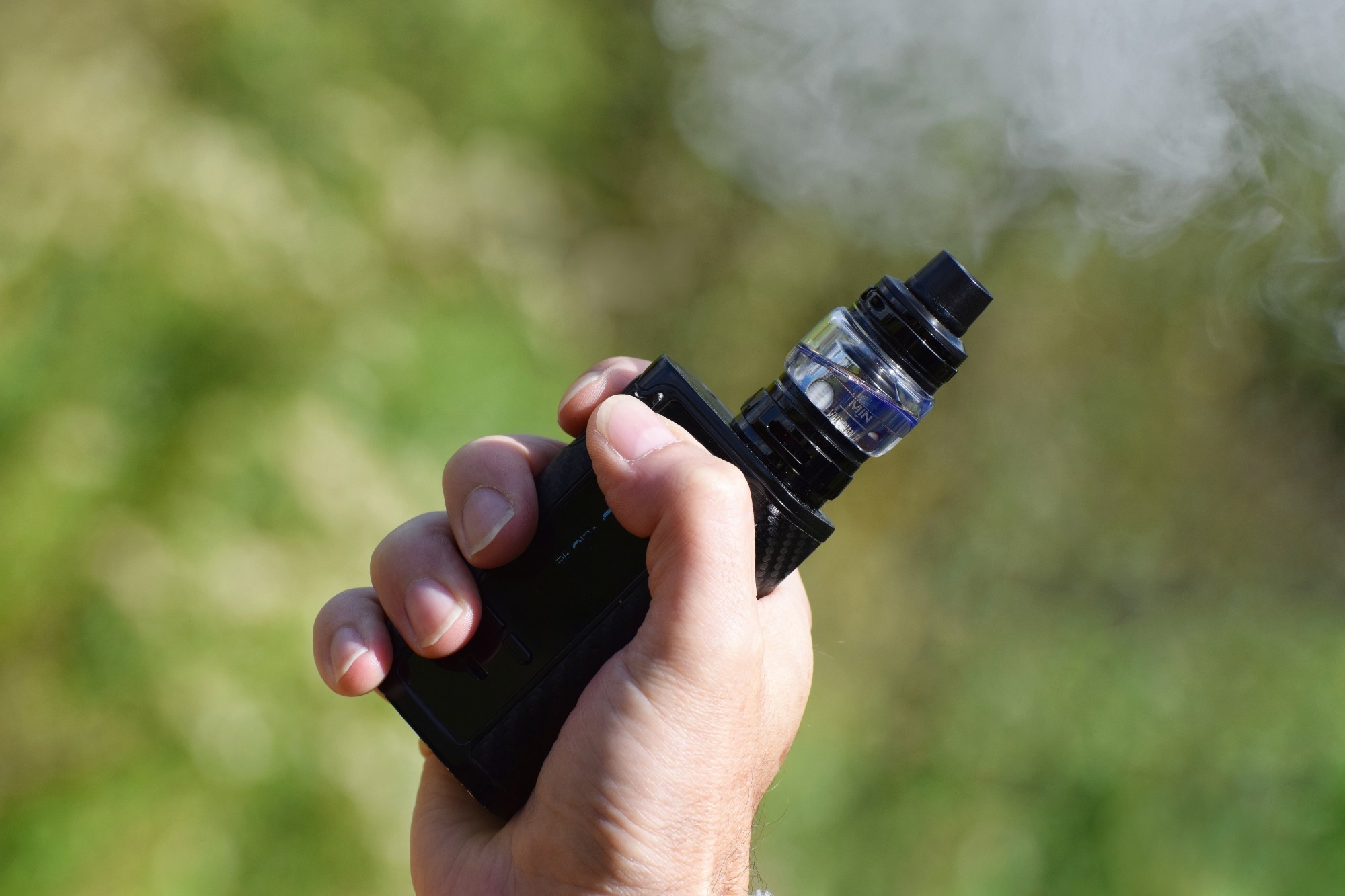A recent JAMA Network Open study investigates the prevalence of United States adolescents vaping cannabidiol (CBD) and the factors associated with this behavior.
 Study: Prevalence and Factors Associated With Vaping Cannabidiol Among U.S. Adolescents. Image Credit: Amani A / Shutterstock.com
Study: Prevalence and Factors Associated With Vaping Cannabidiol Among U.S. Adolescents. Image Credit: Amani A / Shutterstock.com
Background
Although the use of Δ9-tetrahydrocannabinol (THC)-containing cannabis products is not legal in all U.S. states, the 2018 Farm Bill legalized the production and sales of hemp-derived CBD containing up to 0.3% THC. The most popular mode of CBD consumption among youth is inhalation through e-cigarettes and similar devices.
In 2022, a significant increase in cannabis vaping among adolescents was recorded in the U.S., with the highest prevalence reported among twelfth-grade students, followed by tenth-grade students. This increase has been attributed to the increased availability, convenient use, and discreetness of vaping devices.
Although CBD is a non-psychoactive component of cannabis, it has the potential to cause harm to the lungs, liver, and male reproductive system. Therefore, it is vital to determine the prevalence of vaping CBD by e-cigarettes among youths to estimate the health consequences in this population.
A proper estimation of subgroups of adolescents using both e-cigarettes and CBD vaping and those who exclusively vape CBD will provide better insights to develop targeted interventions to prevent negative health consequences. Understanding whether specific demographic factors or certain tobacco use behaviors increase CBD vaping rates among adolescents is also essential.
About the study
The current cross-sectional study obtained relevant data from the National Youth Tobacco Survey (NYTS), a school-based survey. NYTS is conducted annually to collect representative samples of U.S. middle and high school students between 11 and 18 years of age.
In 2022, NYTS was conducted online, in which 28,291 students from 341 schools participated. In the survey, participants were asked whether they vaped CBD or CBD oils or used e-cigarettes even once.
Study participants were also asked if they vaped any of the aforementioned substances or used e-cigarettes beyond 30 days. The participants were also asked about tobacco use, hookahs, smokeless tobacco, and bidis.
Study findings
The study cohort consisted of about 49% females and 51% males. About 56% of the participants were middle school students, whereas 27% were high school students.
The study cohort was significantly diverse, as it comprised students of Hispanic, non-Hispanic, non-Hispanic White, and other ethnicities. The participants identified themselves as bisexual, gay, lesbian, or heterosexual, while a small number of students were unsure.
The prevalence of vaping CBD was significant among e-cigarette users. Students who currently vaped CBD also reported e-cigarette use in the past 30 days.
As compared to non-Hispanic White youths, Hispanic adolescents were more likely to be current e-cigarette users and report CBD use. This disproportionate use could be linked to low media literacy.
Compared to heterosexual groups, a higher prevalence of current CBD vaping was identified among gay, lesbian, and bisexual students. Higher rates of CBD vaping were also observed among those unsure about their sexual identity. This differential prevalence could be because sexual minority adolescents experience greater stress due to social stigma and marginalization.
A positive link between vaping frequency and duration with current vaping of CBD was observed. Notably, the perception of tobacco danger increased vaping CBD, particularly among non-e-cigarette users. Therefore, educating adolescents about the adverse health effects of vaping CBD could positively decrease its use among youths.
Limitations
The current study has some limitations, including its self-reported data, which is subjective to social desirability biases.
Furthermore, NYTS asked students whether they were exposed to CBD vaping and specifically asked about past 30-day vaping of CBD without asking about the frequency or dosage. Due to this lack of data, the authors failed to determine how vaping CBD influenced the study participants’ behavior.
NYTS data also lacked evidence on other sources of CBD, such as edibles, oil extracts, and flowers. Thus, the cross-sectional NYTS data prevented causal inference.
Conclusions
Sexual minority groups and Hispanics were more likely to vape CBD as compared to other groups. Considering these findings, there is an urgent need for information-based educational campaigns and interventions to reduce CBD vaping among adolescents. Likewise, stricter regulations must be developed to reduce the prevalence of CBD vaping among adolescents.
Journal reference:
- Dai, H. D., Subramanian, R., Mahroke, A., & Wang, M. (2023) Prevalence and Factors Associated With Vaping Cannabidiol Among US Adolescents. JAMA Network Open 6(8). doi:10.1001/jamanetworkopen.2023.29167